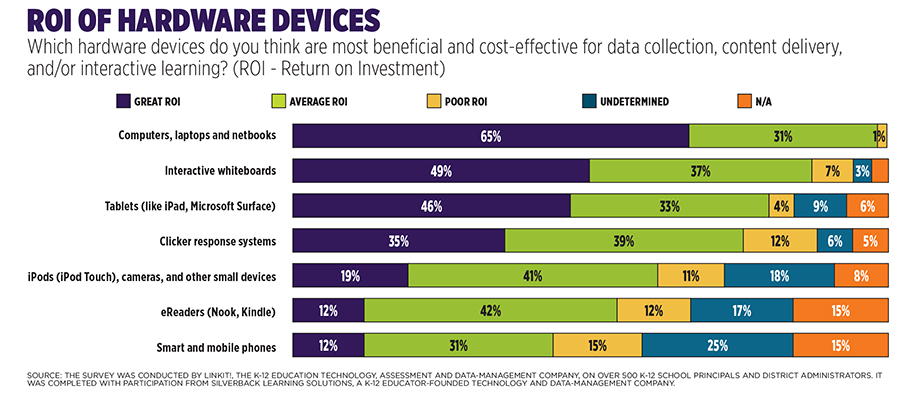PARCC: Is This the Next Big Thing?

All of the new accountability can leave many educators feeling like they are pounding square peg pedagogy into round hole requirements. School CIO advisor Jon Castelhano helps break down some of these new rules and reassures districts that it’s not too late to prepare for PARCC.
Sometimes it is difficult to take the next “big” thing in education seriously. Initiatives seem to come and go, and quite often districts take the wait-and-see approach before making changes and investments. However, when it comes to the Common Core state standards, all but a small handful of states have already adopted them and begun implementation. Many consortia and task forces have been formed to collaborate and support one another with the implementation. So where is the hook into technology? Through a new set of assessments, called PARCC, technology is being embedded into the standards themselves as well as into the assessments.
WHAT IS PARCC ?
PARCC is a consortium made up of 22 states that serve roughly 24 million students. The consortium is funded by a grant from the U.S. Department of Education. PARCC’s task is to develop and design a next-generation assessment system that will test the Common Core standards.
THE PARCC VISION
States that participate in PARCC’s assessments are committed to building a K-12 assessment system that adheres to the following standards:
• Builds a pathway to college and career readiness for all students,
Tools and ideas to transform education. Sign up below.
• Creates high-quality assessments that measure the full range of the Common Core state standards,
• Supports educators in the classroom,
• Makes better use of technology in assessments, and
• Advances accountability at all levels.
HOW WILL DISTRICTS GAIN ACCESS TO PARCC ’S ASSESSMENTS?
The PARCC assessments will be delivered online. The consortium has been busy developing technology guidelines. For those districts that have robust Internet connections and the ability to refresh their computers every three years, the guidelines will probably not cause alarm. However, most districts don’t have this luxury and have been very creative over the years with extending the life of their hardware. Many districts may be able to squeak by with the minimum requirement specifications up until the 2014-2015 assessment, but most likely these requirements will not be compatible with any assessments after the 2015-2016 school year.
THERE’S STILL TIME TO GET ON BOARD WITH PARCC
With the full operational administration of PARCC assessments scheduled for the 2014- 2015 school year, there is still time for planning and preparation. So where is the most logical place to start?
By working together with The SMARTER Balanced Assessment Consortium (SBAC), the State Educational Technology Directors Association (SET DA), and Pearson, PARCC has developed a Tech Readiness Tool that will help states make the transition to next-generation assessments. The Tech Readiness Tool gives districts a way to enter data on their computers and other devices, determine the ratio of devices to test takers, build up their networks and infrastructure, add additional staff members, and train staff members as needed. A district staff member can manually enter or upload the device inventory into the Tech Readiness Tool. After a district completes the school-readiness survey questions and submits the data, the tool will provide a number of reports that will give a snapshot about how prepared the district is for the upcoming assessments.
Cathy Poplin, deputy associate superintendent for educational technology at the Arizona Department of Education and a PARCC technology readiness coordinator, has done a number of PARCC readiness trainings with Arizona school districts. For districts that are in transition, she says, “I would highly recommend reviewing the PARCC Tech Specification (Version 2) document and sharing it with your district leadership. In addition, look at all of the reports provided by the Tech Readiness Tool. The data can be exported into a spreadsheet or printed directly as a PDF document.”
She also advises districts to pay particular attention to devices that meet the minimum and recommended specifications. She says, “I would begin to work on a plan to upgrade or replace any computer running Windows XP. I would also encourage districts to use the PARCC rule of thumb—one computer for every two students in the largest tested grade level—to begin to think about what this means for their school district.”
Poplin also encourages district leaders to read SET DA’s document on “Technology Readiness for College and Career Ready Teaching, Learning, and Assessment” (www.setda.org/c/document_library/get_file?folderI d=350&name=DLFE-1628.pdf ). She says, “It encourages local education agencies to think bigger than just technology for assessment. It also makes them think and plan for technology for teaching and learning. Common Core standards have clear expectations about the use of technology by students.”
The PARCC leadership team is working on the final touches of a planning guide that they hope to release in the near future. The guide will include a draft of the School Technology Readiness Planning calculator, which should assist districts with different testing options. It is important to remember that the online assessment is not traditional with respect to the amount of time a district has to administer the test to the designated grades. At this time there is a 20-day maximum window for the Performance Based Assessment (PBA) and a 20-day maximum for the End of Year Assessment (EOY). With the length of the testing window and assistance from the Tech Readiness Tool and eventually the planning calculator, the transition to next-generation assessments can be a smooth transition.
There are still many unanswered questions concerning the timeline and funding sources. Some people think the assessment will never become a reality. It is also likely the guidelines will have a few revisions before they are final. Whatever your opinion is on the PARCC assessment, this is a good opportunity to take a closer look at networks and devices and reflect on the experience we are providing to our students and teachers.
Jon Castelhano is director of technology for Apache Junction USD in Arizona.
SCHOOL CIO BY THE NUMBERS
WILL MORE DATA MAKE A DIFFERENCE?
90% of respondents believe that data will be the primary driver of what teachers teach, how they teach, and to whom they teach within the next 4 years (67% in the next 2 years).
60% of the respondents believe that district-level support is “not enough” in all areas of data use. Compared to 2 years ago, perception of district-level support has dropped in all areas.
Only 36% of respondents believe that over 60% of their teachers are actively using data to drive instruction.

